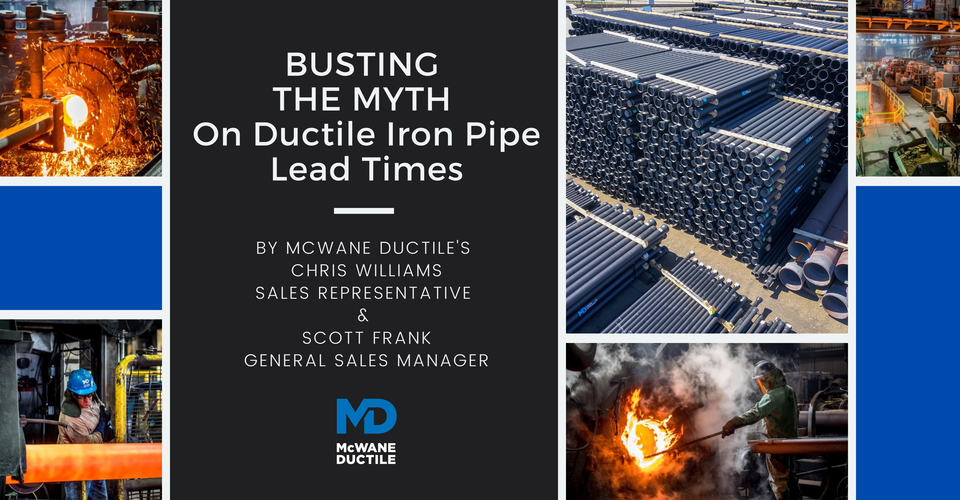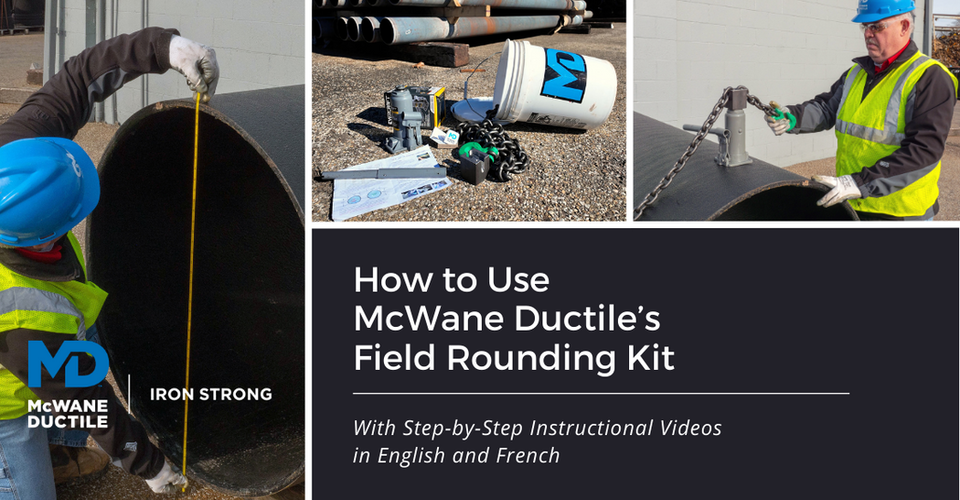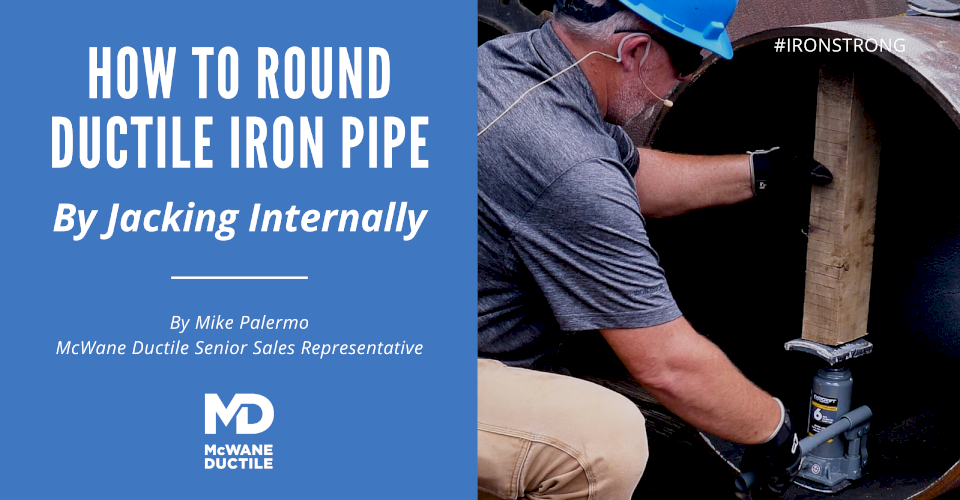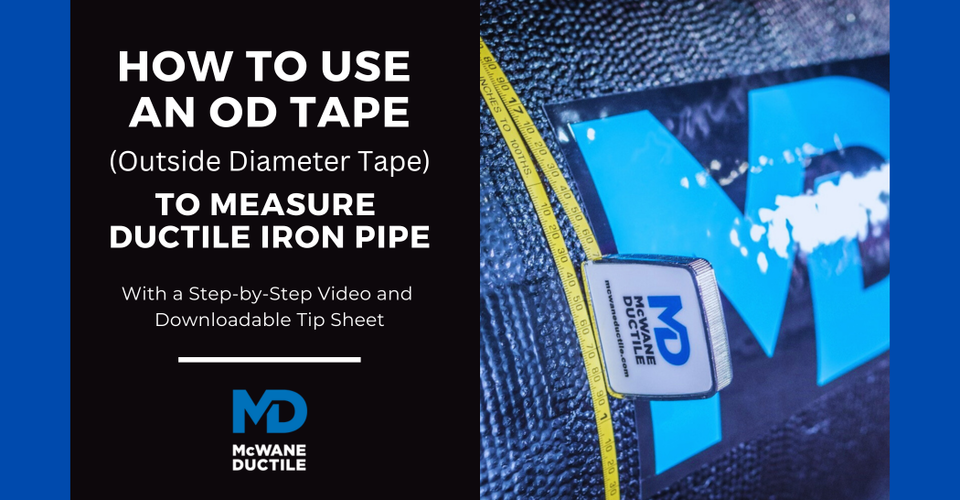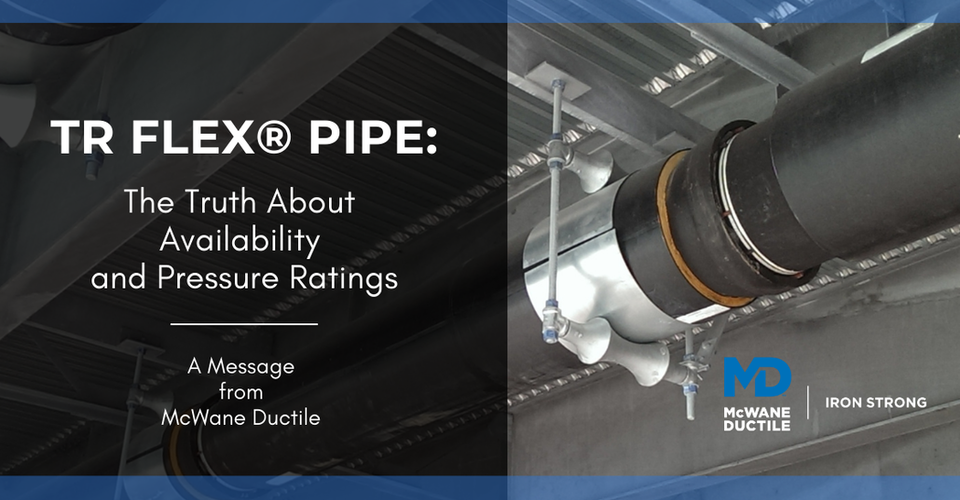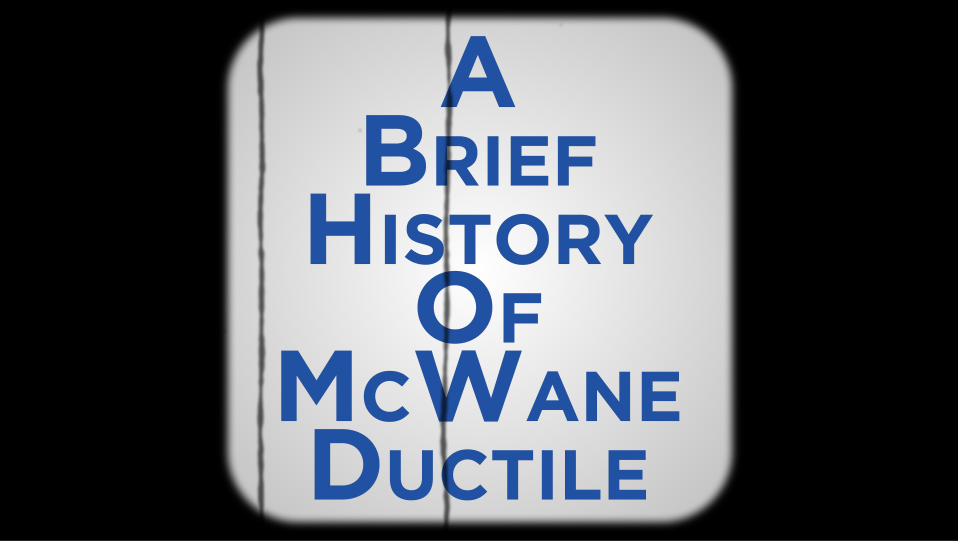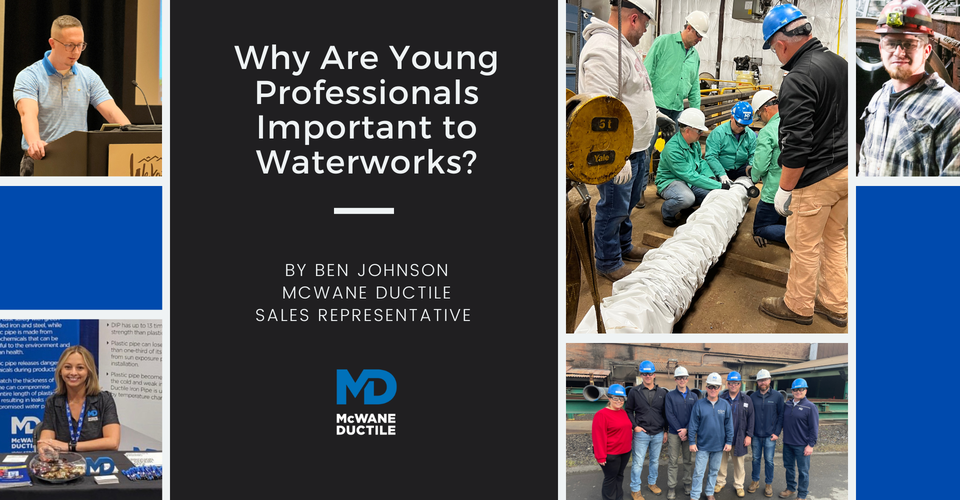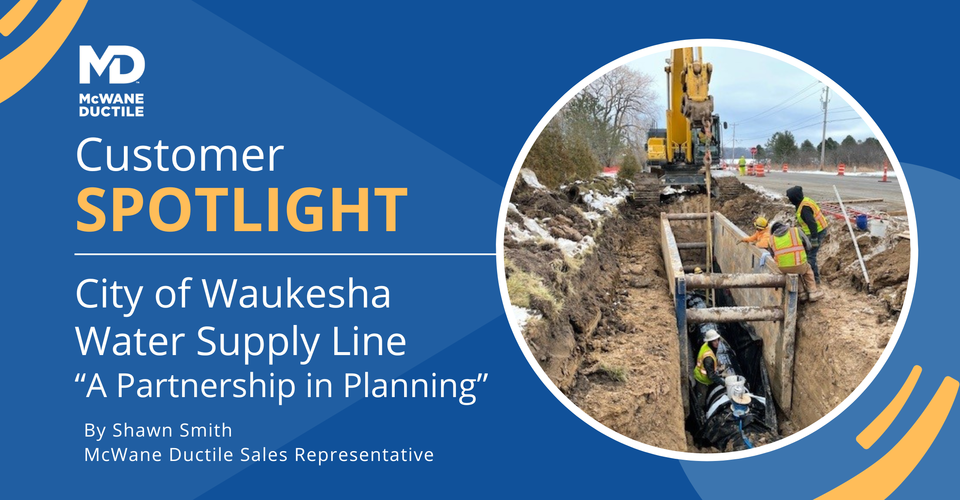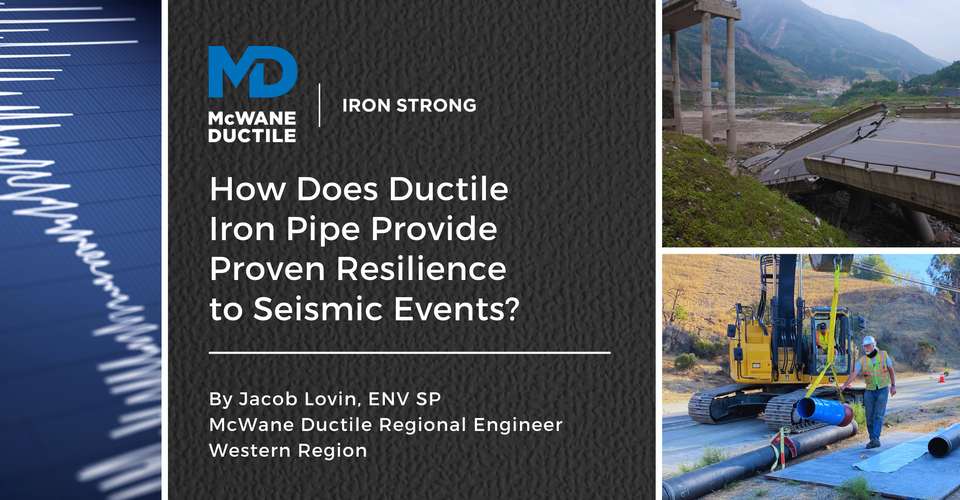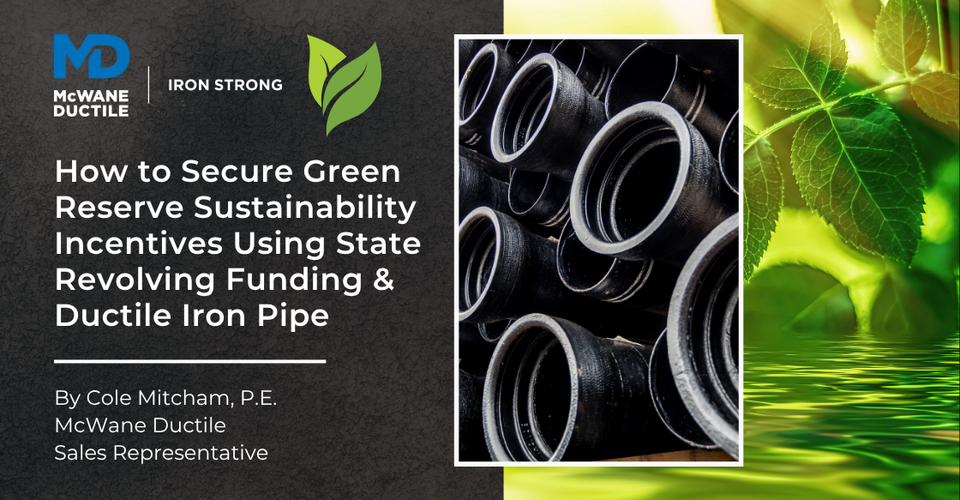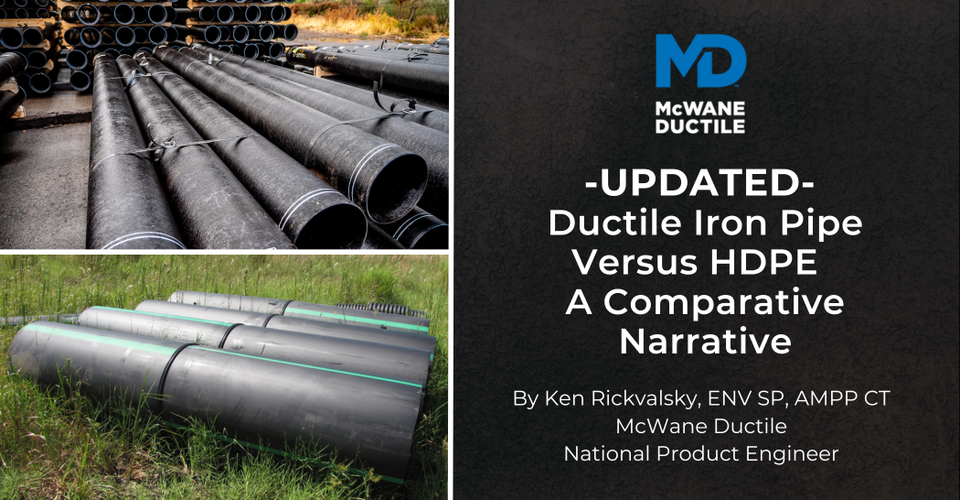-
Busting the Myth on Ductile Iron Pipe Lead Times
03/23/2023 In Products ServicesUnfortunately, the waterworks and water utility industry were not spared from the shortages of finished products essential to maintaining and expanding drinking water systems nationwide. This Iron Strong Blog will discuss McWane Ductile’s present delivery window to the waterworks community and will correct myths and misconceptions that our Ductile iron pipe products are currently unattainable.
-
Why Would High Temperatures Affect Piping Material Selection?
03/25/2025 In Products TechnicalHave you ever considered how high temperatures impact your choice of piping material for a water system? It might not be something that comes to mind immediately, but it’s an important factor. Water treatment specialists pay close attention to water temperatures because they influence how the water reacts to treatment chemicals. Additionally, water and ground temperatures can significantly affect the performance of certain piping materials, particularly polyvinyl chloride (PVC).
-
HOW TO USE MCWANE DUCTILE'S FIELD ROUNDING KIT
04/04/2024 In Products TechnicalIs every piece of Ductile iron pipe (DI pipe) round? The short answer is no, but most of the time, a piece of pipe may be so slightly oval that it is not even noticeable to the end user. In fact, the way pipe is manufactured today, out-of-round issues are rarely a concern. At our foundries, there are quality assurance procedures in place that help safeguard this from occurring. However, there are occasions when you may encounter a piece of pipe in the field, typically on a field cut, that is too oval to facilitate an easy assembly. This #IronStrong Blog provides step-by-step instructions on how to round an oval ductile iron pipe using a field rounding kit.
-
How To Round Ductile Iron Pipe By Jacking Internally
08/20/2020 In InstallationOccasionally, Installers in the water industry may experience difficulties when attempting to assemble cut lengths of large diameter pipe. This is sometimes due to ovality issues with the pipe material, especially when installing large-diameter, thin wall pipe. Inexperience with handling the occasional oval pipe can lead to a rather frustrating day. Utilization of proper materials and installation practices can resolve the issues more easily and help to ensure the pipeline will function as intended well beyond the designed expectations.
-
How To Use an OD Tape (Outside Diameter Tape) to Measure Ductile Iron Pipe
07/12/2024 In Installation TechnicalJimmy texts Bill, "I can't get into the virtual meeting." Bill replies, "You need to click on the link I sent you." Jimmy responds, "Where is the link?" A frustrated Bill answers, "In the email about the meeting." A confused Jimmy asks, "On my computer? Bill answers again, "Yes! Is your computer on?" Jimmy fumbles to turn on his computer and texts Bill again, "OK, it is now. How do I get to the meeting?" Does this situation sound familiar to you? Have you ever explained something to someone only to realize that they knew less about the subject than you had previously assumed? In this episode of Iron Strong, we'll cover how to use an OD (Outside Diameter) Tape when measuring Ductile iron pipe.
-
Gaskets, Goblins, and Ghouls, Oh My! A Cure from the Ditch Doctor
10/31/2024 In How Products Q&A TechnicalWelcome to our Halloween edition of #IronStrong," where we’ve compiled the spooky challenges haunting construction builders and pipeline contractors. From tricky terrain to mysterious leaks and unforeseen obstacles, we’re here to illuminate the “scary” aspects of water pipeline installations that can send chills down a project manager's spine.
See the “Ditch Doctor” advice column and a link to our blog, “Exorcising Restraint." We dissect a few daunting issues and present real-world solutions and insights to help brave contractors turn their nightmares into success stories. Grab your flashlight (and tools) as we guide you through the shadows, ensuring your next project is well-prepared to face any “frightening” twist that may lie ahead.
-
TR FLEX PIPE: The Truth About Availability and Pressure Ratings
11/14/2024 In Products TechnicalMisleading information has recently circulated regarding the availability of TR Flex® restrained joint pipe and fittings, creating a flurry of questions and uncertainty for engineers and utilities about its service performance and integrity. How can an engineer design a project without knowing the facts? After reviewing the information in this #IronStrong Blog, one can better understand future expectations.
-
Iron Strong Since 1871: A Brief History of McWane Ductile
02/05/2019 In Our Company ProductsFor generations, McWane Ductile has been an industry leader in the manufacture of water distribution and infrastructure products. The history of McWane Ductile, a family owned company, has beginnings dating back as early as 1871, when Charles Phillip McWane entered the foundry business in Lynchburg, Virginia, with his sons Harry and James Ransom (JR).
-
Why Are Young Professionals Important to Waterworks?
11/30/2023The question will come up to everyone sometime in their young lives. What do you want to do when you grow up? What a loaded question! Everyone wants job security, and it's one of the great things about the waterworks industry. This industry will never go away, becoming more critical every year. Whether you work for a Manufacturer, Distributor, Contractor, Engineer, or Municipality, there are thousands of jobs and endless possibilities for current and future work. And with an aging generation in the waterworks industry, the near future for young professionals is more promising than ever.
-
Customer Spotlight- City of Waukesha Water Supply Line - A Partnership in Planning
01/05/2024 In Our Company ProductsWith the turn of the calendar into a new year, many people have already started planning for the coming months. Whether planning that warm weather vacation to take a mental break from the snow and ice many of us are experiencing or planning our grocery list for the week ahead, good planning leads to successful outcomes. This preparation is also the case with water utility projects.
Latest Posts
- Can Joining Water Works Industry Organizations Help You Grow Professionally? 10/21/2025 In Careers WaterWorks
- How Does Ductile Iron Pipe Provide Proven Resilience to Seismic Events? 09/04/2025 In Products Resiliency Technical
- How to Secure Green Reserve Sustainability Incentives Using State Revolving Funding & Ductile Iron Pipe 07/29/2025 In Energy Products Technical
- UPDATED - Ductile Iron Pipe Versus HDPE - A Comparative Narrative 05/29/2025 In Comparisons Products Technical

